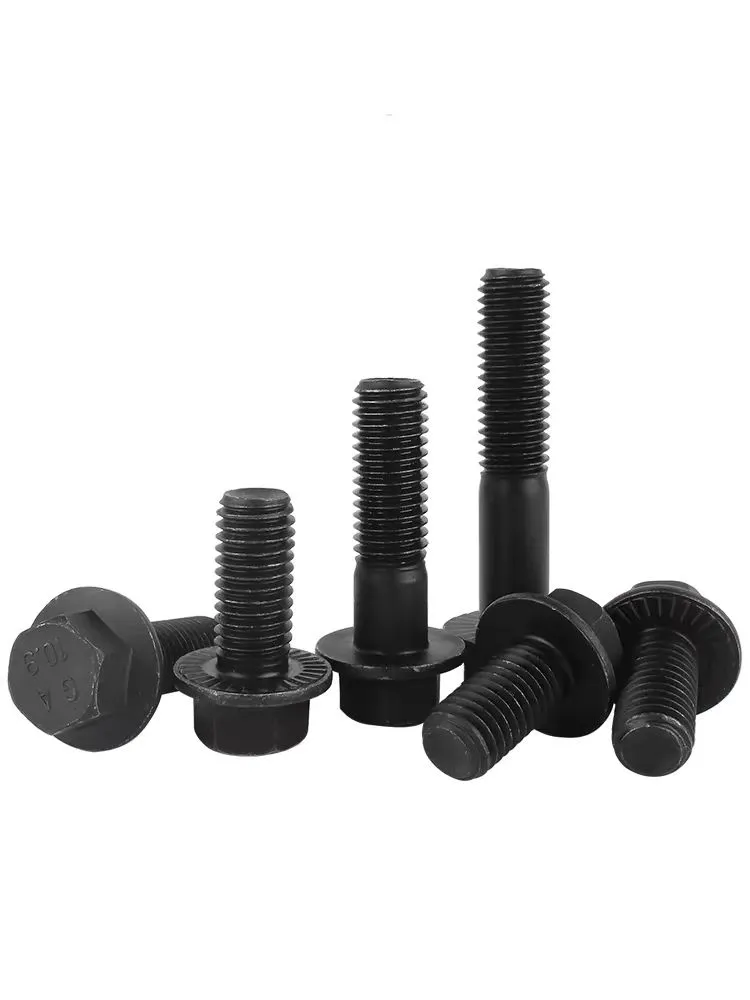

m10 fine thread flange nut
Dec . 10, 2024 14:51 Back to list
m10 fine thread flange nut
Understanding M10 20 Fine Thread Flange Nuts
In the world of mechanical engineering and construction, choosing the right fastener is crucial for ensuring the structural integrity and functionality of an assembly. One specific type of fastener that plays an important role in various applications is the M10 20 fine thread flange nut. This article will delve into the characteristics, applications, and advantages of this type of nut.
What is an M10 20 Fine Thread Flange Nut?
The designation M10 20 refers to the specifications of the nut. The M indicates that it is a metric-sized nut, which is vital for compatibility with metric bolts. The 10 signifies the nominal diameter of 10 millimeters, while the 20 indicates the fine pitch of the thread, meaning it has 20 threads per inch (TPI). In terms of metric thread pitch, this corresponds to a 1.25 mm pitch, which is finer than standard M10 threads (which typically have a 1.5 mm pitch).
The flange aspect of the nut refers to an integrated wider surface that provides increased bearing area. This feature is particularly beneficial when it comes to distributing the load over a larger surface, minimizing the risk of damage to the material being fastened. The flange nut is often designed with a level surface and sometimes incorporates a locking mechanism to prevent loosening due to vibrations.
Applications
M10 fine thread flange nuts are widely used in various industries, including automotive, aerospace, construction, and heavy machinery. Their ability to provide a secure fit while accommodating fine adjustments makes them suitable for precision applications. For instance, in automotive applications, these nuts are used to secure components where space is limited and fine adjustments are paramount for performance.
In construction, flange nuts are utilized for mounting structural elements where robustness and load distribution are critical. For instance, they are frequently used in securing beams, columns, and other structural supports. Their design allows them to perform well in environments where vibration and movement are a concern, making them a reliable choice.
Advantages
m10 fine thread flange nut

There are several advantages to using M10 20 fine thread flange nuts
1. Load Distribution The flange design increases the surface area, helping to distribute the load more evenly. This is particularly important in applications where the material might be weakened by localized stress.
2. Reduced Risk of Loosening Many flange nuts come with features designed to improve grip and resist loosening due to vibration. This is crucial in applications where equipment undergoes constant movement.
3. Ease of Installation The wider flange provides a larger area for wrenches, making installation and removal easier compared to traditional nuts. This can significantly reduce assembly time in industrial settings.
4. Versatility With its fine thread and robust design, the M10 20 flange nut can be used in a wide range of applications, from light machinery to heavy-duty construction, allowing for considerable flexibility in design and assembly.
5. Corrosion Resistance Many flange nuts are available in various materials, including stainless steel and coated finishes, which provide resistance to corrosion and wear over time, ensuring longevity in harsh environments.
Conclusion
In conclusion, M10 20 fine thread flange nuts are essential components in numerous mechanical and structural applications. Their design optimizes performance by enhancing load distribution, minimizing loosening risk, and simplifying installation. As engineers and designers continue to seek reliable and efficient fastening solutions, the significance of this particular nut will remain pivotal for many industries. Whether you're assembling machinery or constructing a building, understanding the capabilities of M10 20 fine thread flange nuts will undoubtedly enhance your projects' success and durability.
Latest news
-
High-Strength Hot Dip Galvanized Bolts - Hebei Longze | Corrosion Resistance, Customization
NewsJul.30,2025
-
Hot Dip Galvanized Bolts-Hebei Longze|Corrosion Resistance&High Strength
NewsJul.30,2025
-
High-Strength Hot-Dip Galvanized Bolts-Hebei Longze|Corrosion Resistance&High Strength
NewsJul.30,2025
-
Hot Dip Galvanized Bolts-Hebei Longze|Corrosion Resistance&High Strength
NewsJul.30,2025
-
Hot Dip Galvanized Bolts - Hebei Longze | Corrosion Resistance, High Strength
NewsJul.30,2025
-
High-Strength Hot Dip Galvanized Bolts-Hebei Longze|Corrosion Resistance, Grade 8.8
NewsJul.30,2025

